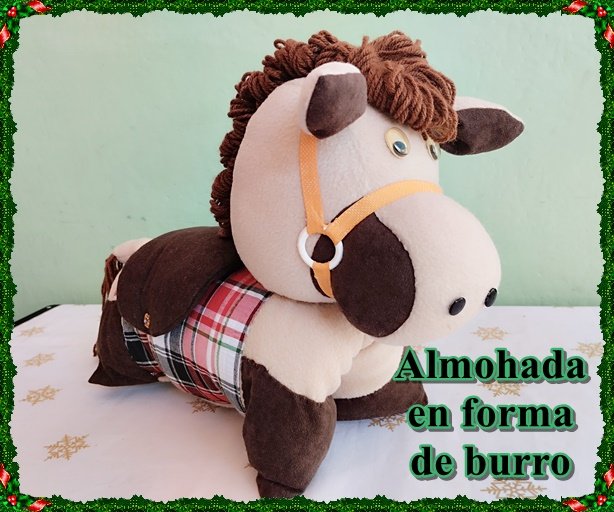
Saludos, amigos. Hoy les traigo otro proyecto, un regalo para mi ahijado porque se acerca su cumpleaños. Vamos a realizar una almohada que tendrá la forma de un burro, así la podrá usar por las noches y acurrucarse con ella, consideré este animal como la mejor elección porque me pareció sencillo su diseño. Además, para mí no hay nada mejor que hacer las cosas con nuestras propias manos, eso le añade un valor adicional, pues el significado emocional cambia. Les mostraré los materiales que utilicé y el procedimiento.
Greetings, friends. Today I bring you another project, a gift for my godson because his birthday is coming up. We are going to make a pillow in the shape of a donkey, so he can use it at night and cuddle with it, I considered this animal as the best choice because I found its design simple. Besides, for me there is nothing better than making things with our own hands, that adds an extra value, because the emotional meaning changes. I will show you the materials I used and the procedure.
Materiales e instrumentos:
- Telas
- Hilos
- Aguja
- Tijera
- Lápiz
- Guata
- Ojos de muñeco
- Estambre
- Cartón
- Botones
- Cinta
- Aros
Materials and instruments:
- Fabrics
- Threads
- Needle
- Scissors
- Pencil
- Wadding
- Doll eyes
- Yarn
- Cardboard
- Buttons
- Ribbon
- Hoops
Procedimiento:
La tela que utilicé fue una especial para hacer peluches. La seleccioné color marrón claro, su textura es muy suave, con esta haría el cuerpo del burro, la parte posterior de las orejas y el rabo. Asimismo, con la tela marrón oscura moldearía las patas del animal, la silla de montar, la parte frontal de las orejas y los laterales de la trompa. La de cuadros rojos, negros y blancos correspondería a la frazada que le colocaríamos arriba del lomo.
Procedure:
The fabric I used was a special one for making stuffed animals. I selected a light brown color, its texture is very soft, with this I would make the body of the donkey, the back of the ears and the tail. Likewise, with the dark brown fabric I would mold the legs of the animal, the saddle, the front part of the ears and the sides of the trunk. The red, black and white plaid would correspond to the blanket that we would place on top of the back.
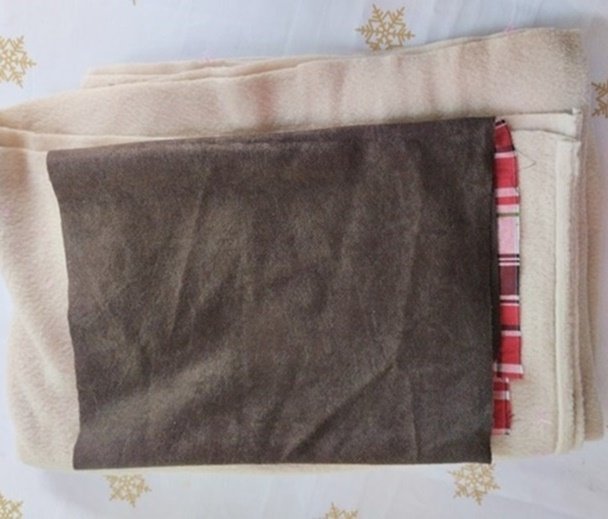 | 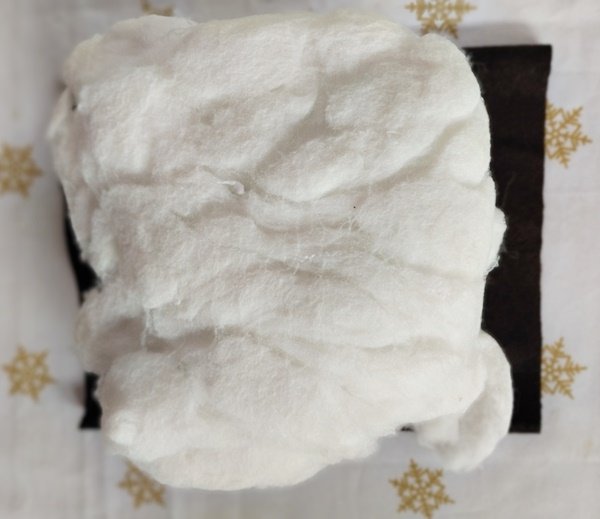 |
|---|
Empecé sacando los patrones en cartón. Mi abuela me ayudó a modelar cada fragmento para obtener la silueta que deseamos. En la fotografía superior están identificadas todas las partes.
I started by drawing the patterns on cardboard. My grandmother helped me to model each fragment to get the silhouette we wanted. In the picture above all the parts are identified.
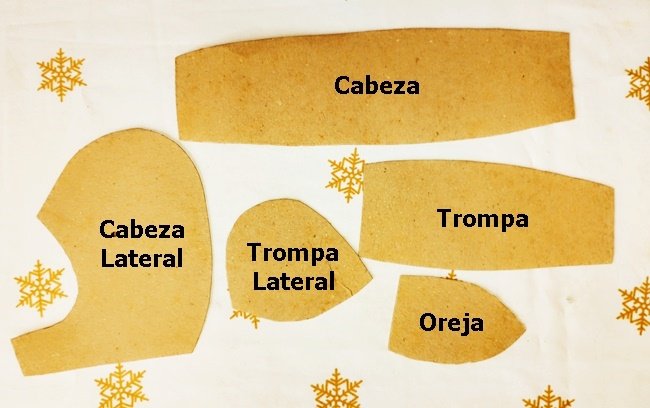
Recorté la tela, en la imagen se pueden observar las cuatro patas del burro -en este caso, tienen forma de rectángulos-. Posteriormente, cosí los bordes, dejando la parte de arriba abierta. Realicé un procedimiento similar con la silla de montar, pero antes de coserla completa, le añadí guata para rellenar.
I cut out the fabric, in the image you can see the four legs of the donkey -in this case, they are in the shape of rectangles-. Afterwards, I sewed the edges, leaving the top part open. I did a similar procedure with the saddle, but before sewing it all together, I added wadding for stuffing.
 | 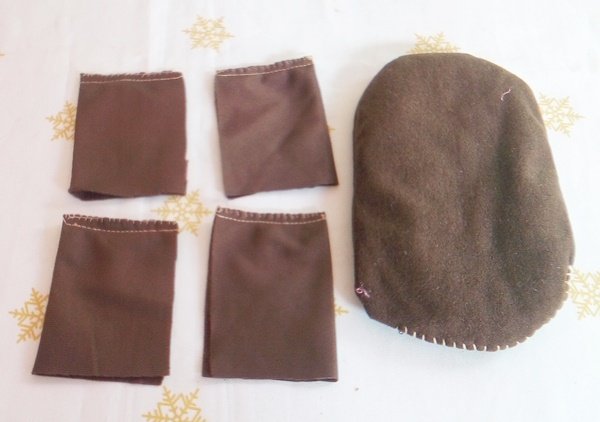 |
|---|
En cartón maqué el cuerpo del burro, las medidas fueron: 18 cm de alto por 20 cm de ancho. Inmediatamente, saqué esta sección doble en la tela de peluche. Lo cosí, dejándole un lado abierto para agregarle el relleno. Le coloqué suficiente para que se viera voluminoso.
I made the body of the donkey out of cardboard, the measurements were: 18 cm high by 20 cm wide. Immediately, I took this double section out of the stuffed fabric. I sewed it, leaving one side open to add the stuffing. I put enough to make it look bulky.
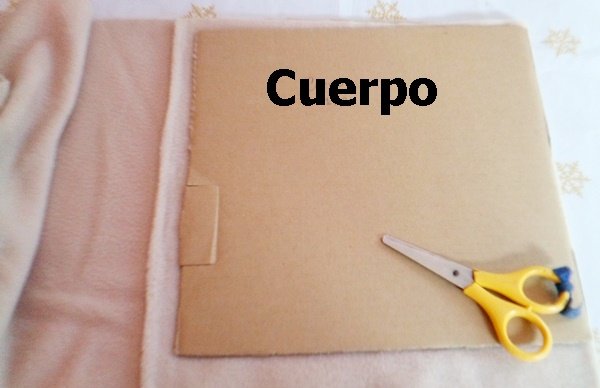

Uní las piezas de la cara del burro, una vez que estuvo lista la rellené. A las orejas no se le coloca guata. De inmediato, pegué los ojos y dos círculos de plástico en la nariz, estos representarán los agujeros.
Para el cabello se hace un tejido con estambre, el mismo se mantiene estable con unas puntadas de hilo negro.
I joined the pieces of the donkey's face, and once it was ready I stuffed it. The ears are not stuffed with wadding. Immediately, I glued the eyes and two plastic circles on the nose, these will represent the holes.
For the hair, a weave is made with yarn, which is kept stable with a few stitches of black thread.
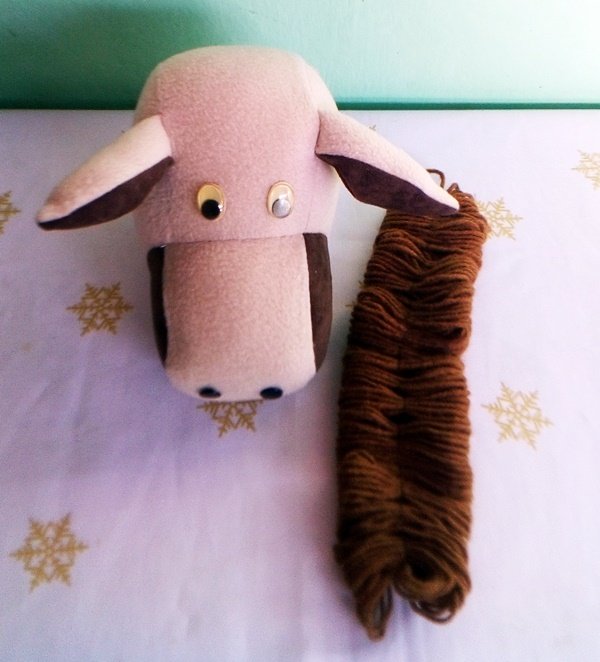 | 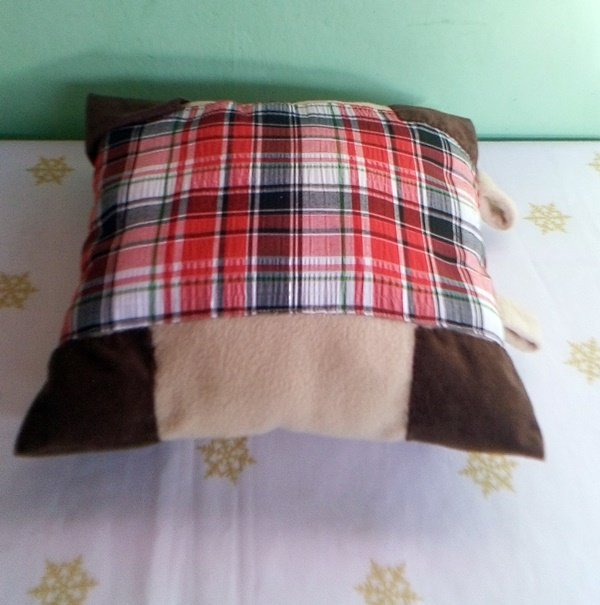 |
|---|
En las esquinas del cuerpo se cosen las patas, como se aprecia en la imagen. Lo siguiente que realicé fue recortar la tela de cuadros de una dimensión menor porque esta se le añadirá en el lomo.
In the corners of the body the legs are sewn, as shown in the picture. The next thing I did was to cut out the checkered fabric of a smaller size because it will be added to the back.
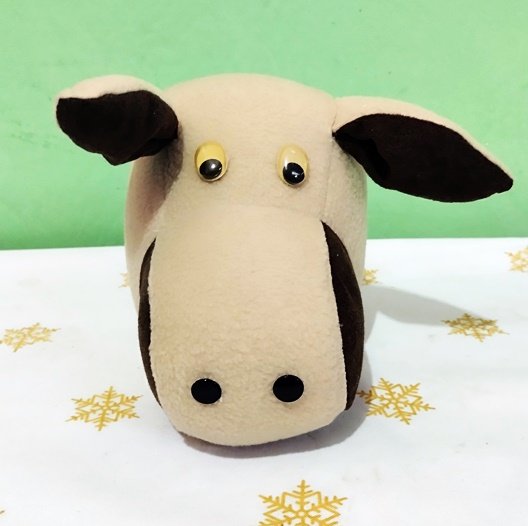 | 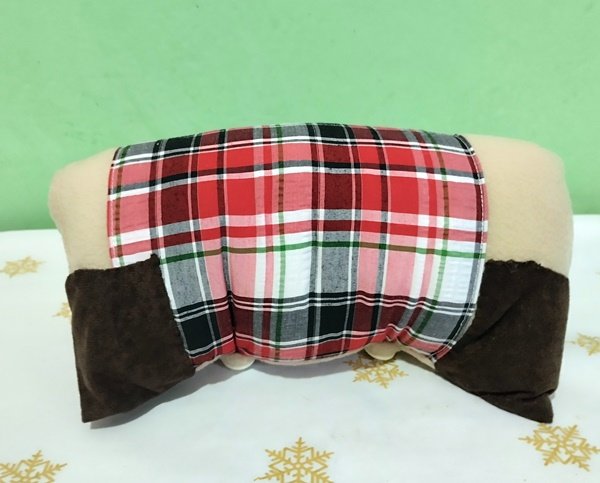 |
|---|
Para darle a la almohada la forma del cuerpo del animal, hice dos tiras con un ojal para abrocharlas a los botones que se pegaron en la parte inferior. La figura quedará tal como se observa en la foto.
To give the pillow the shape of the animal's body, I made two strips with an eyelet to fasten them to the buttons that were glued on the bottom. The figure will be as shown in the photo.
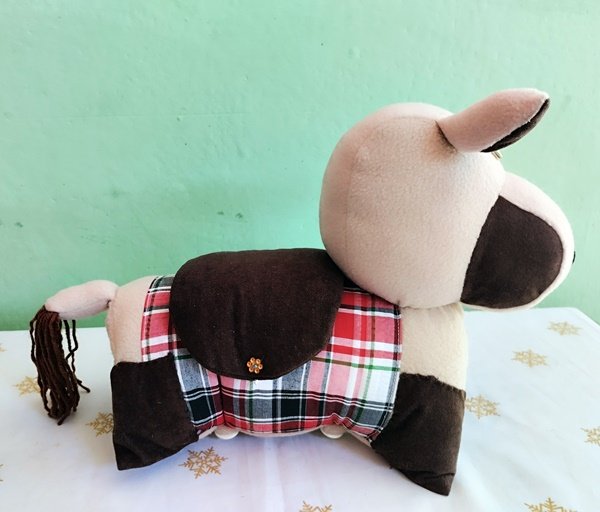 | 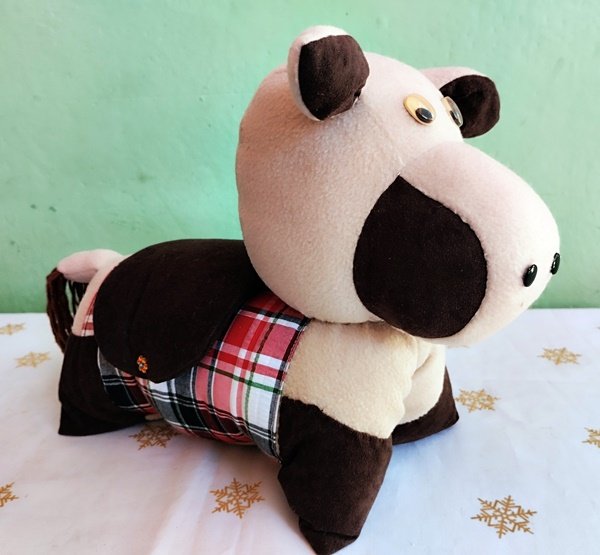 |
|---|
Realicé el rabo del mismo color del cuerpo y le coloqué estambre para simular pelos. Pegué la silla y como decoración adicioné dos botones en forma de flor, uno de cada lado.
I made the tail in the same color as the body and added yarn to simulate hair. I glued the saddle and as decoration I added two flower-shaped buttons, one on each side.
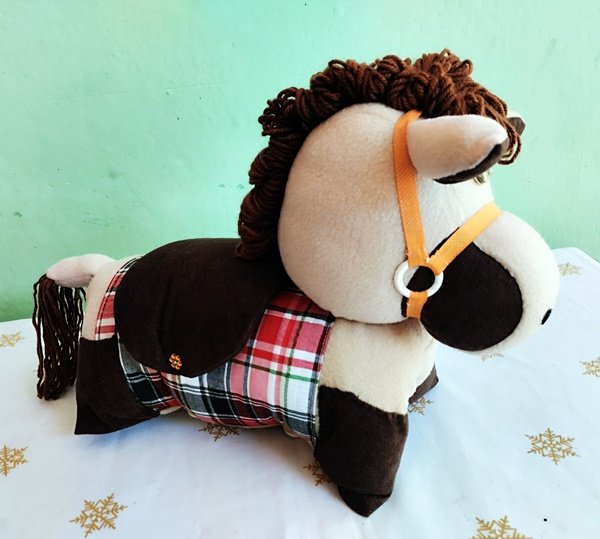
Le añadí las correas a la trompa, las uní a través de un aro. Por último, le coloqué los pelos en la cabeza. De esta forma, concluimos este proyecto.
I added the straps to the trunk, attached them through a ring. Finally, I put the hair on his head. In this way, we concluded this project.
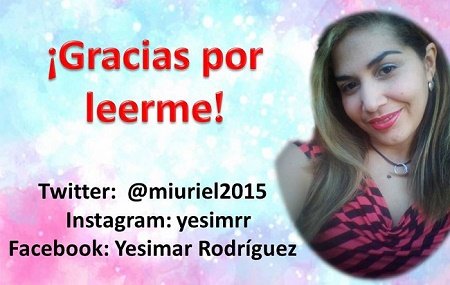
Texto traducido con DeepL Translate.
Todas las fotografías son de mi archivo personal.
Text translated with DeepL Translate.
All photographs are from my personal archive.
